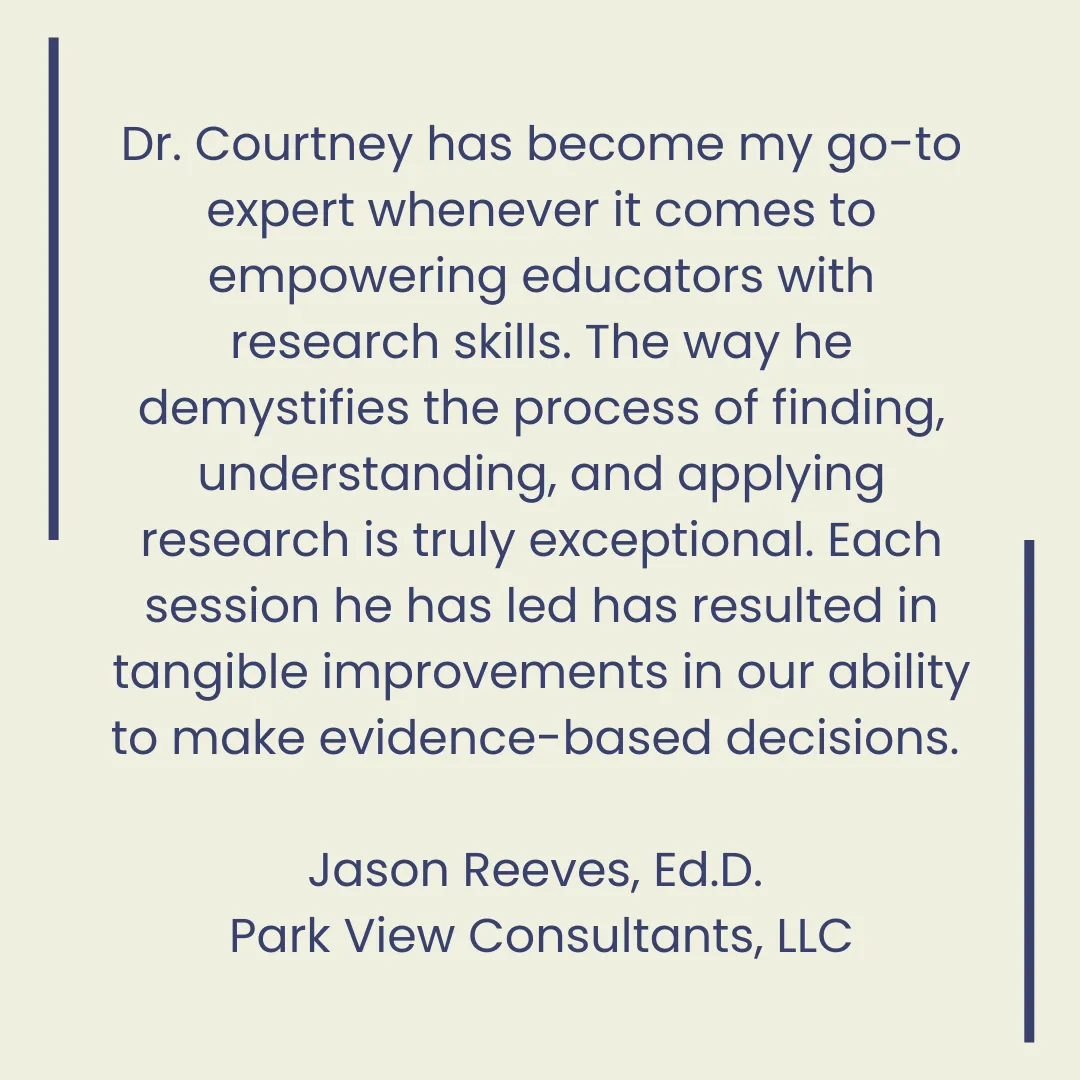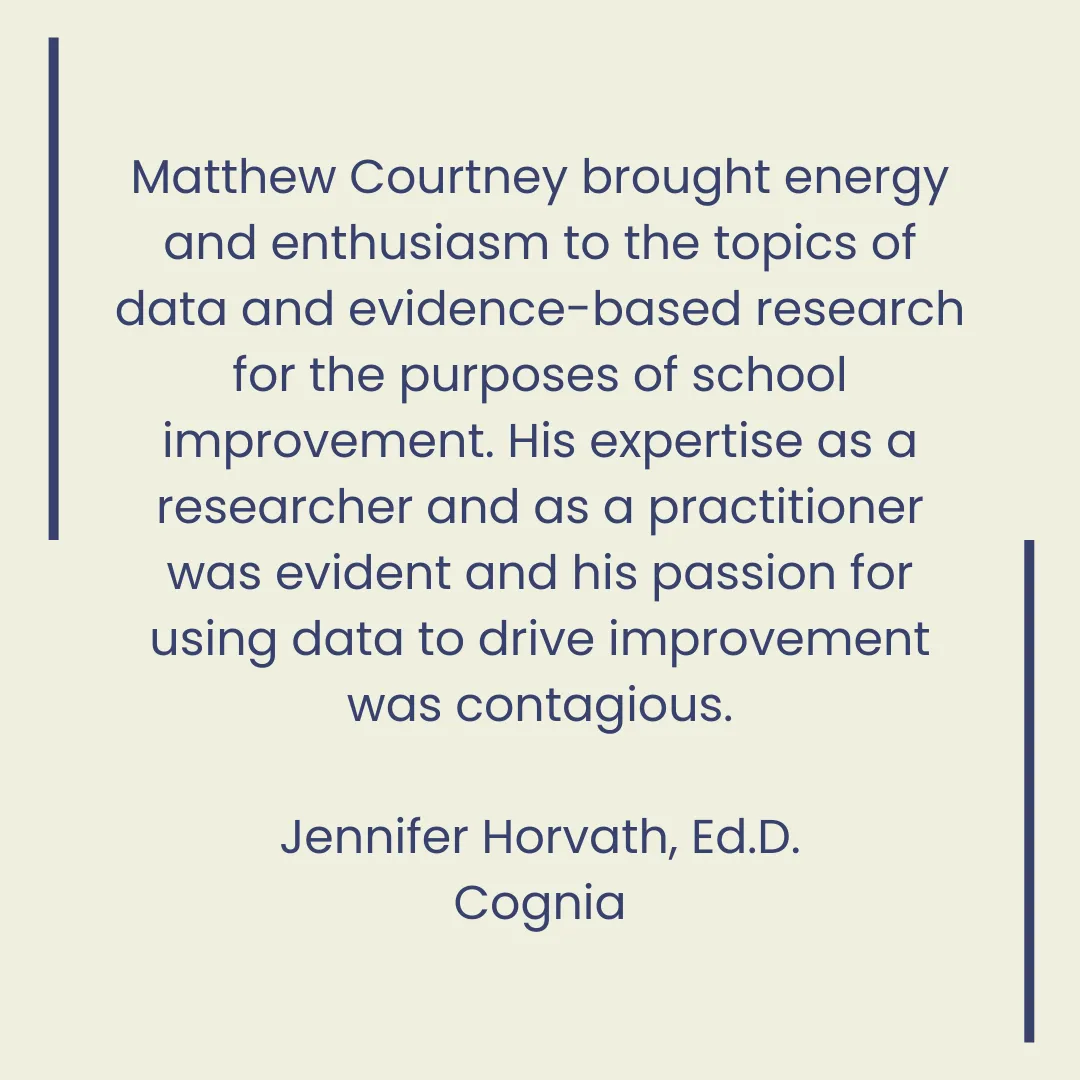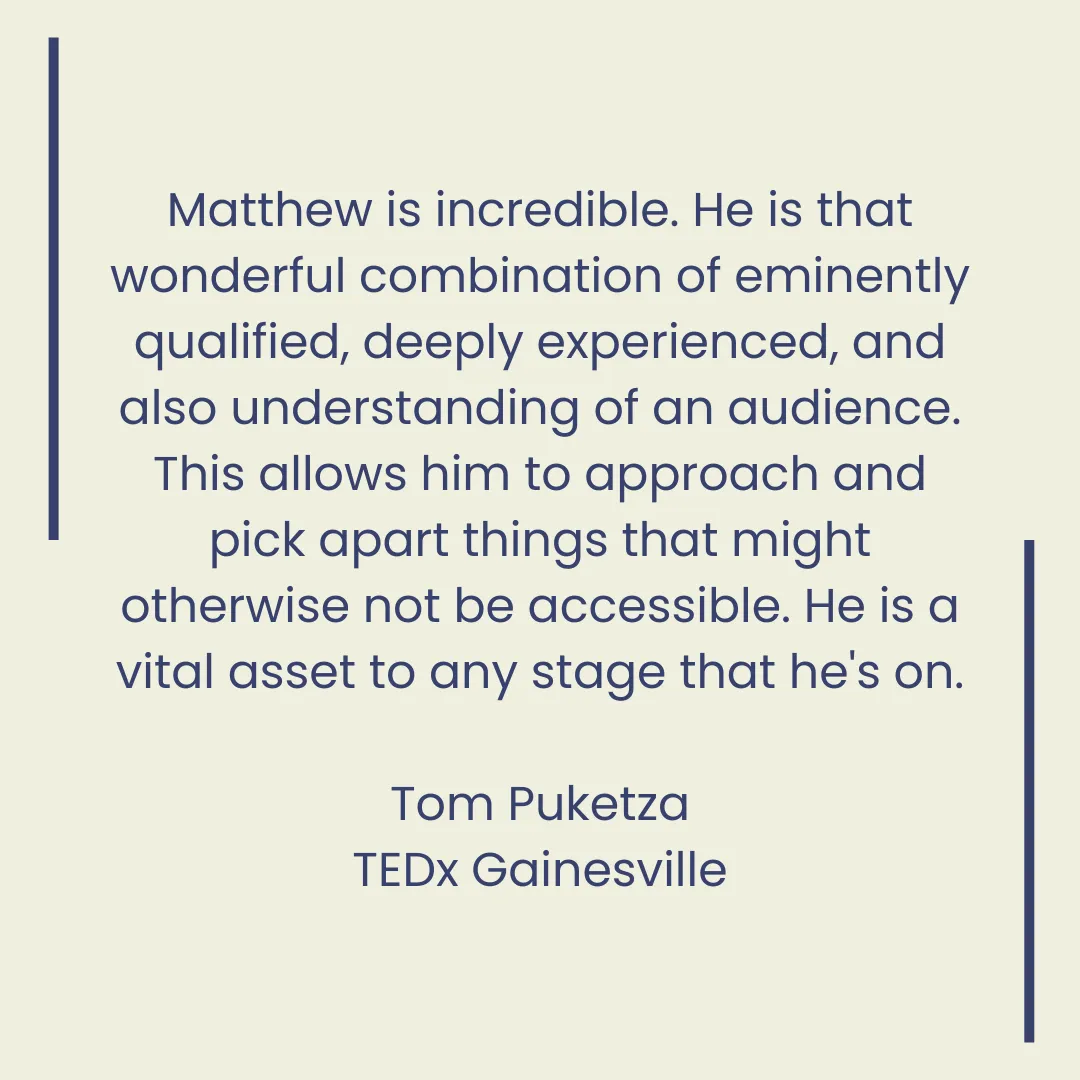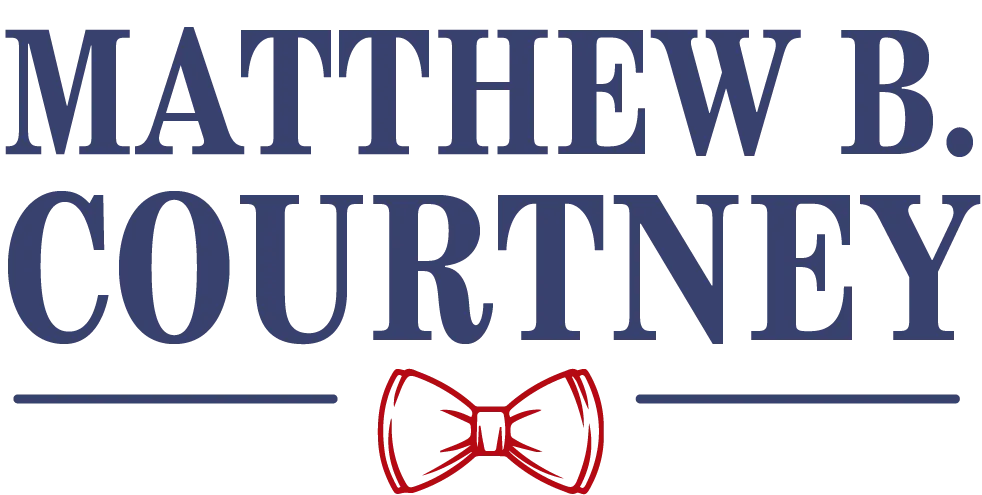
EXPLORE PROVEN METHODS.
ENGAGE COLLECTIVE WISDOM.
ELEVATE YOUR WORK.
Power Up Your Organization with Evidence-Based Solutions
Turn Evidence Into Dynamic Success

Create Real Change
Put into action policies supported by solid evidence that your colleagues will readily endorse.

Gain Confidence
Reclaim your autonomy as a leader and switch out ineffective initiatives for evidence-based alternatives.

Understand Your Impact
Practically apply research to your methods and understand your impact like never before.
Hi! I'm Matthew B. Courtney, Ed.D.
I help organizations transform the way they work, and I want to show you how to leverage the power of academic research and data to drive continuous improvement in your setting.
When I started in this work, I was a music teacher driven by a burning desire to really move the needle for my students. At some point, I realized that on my own I could only make so much impact using tools from a broken system. That's when the light bulb went off - if I wanted to create large-scale positive change, I needed to find a solution that all educators could use to bridge the gaping gaps in inefficient educational systems. And that's exactly what sparked Courtney Consulting into existence. I knew all the answers I'd been looking for were already out there - in the research - I just needed to share them with my colleagues.
My next step would be to head back to the classroom, this time as a student myself.
My academic journey to find a solution for better educational systems led to three graduate degrees, culminating in a doctorate that allowed me to deepen my understanding and enhance my skills in educational theory and practice. Now that I've learned all the important stuff about creating systems that work, I'm sharing them with educators who are ready to change their classrooms.



Moving Forward Starts with a Single Step

Get In Touch
Your first step to begin introducing evidence-based decision-making to your school is to simply get in touch by booking a call.

Discuss What You Need
Fill in the blank: “I can’t imagine what my school would be like if ________.” During our first conversation, we'll dig deep into what you challenges you face, what dreams you can dream for your students, and how evidence-based decision-making can help.

Forge a Path Forward
We’ll talk timelines, what a solution would like and how it can fit into your schedule. By keeping the students at the center of the conversation, my model allows us to dive deep, provide support, and ensure meaningful, lasting change.
